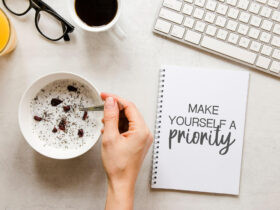Intuition is the quiet feeling that rises before a thought forms. It is the tug in your chest that says wait or the unexpected lightness that says yes. When you are healing from stress, loss, illness, or the slow accumulation of daily overwhelm, that inner voice can be a compass. The more faithfully you learn to hear it, the more skillful your choices become. Intuition is not the opposite of reason. It is another channel of intelligence that we sense through the body, the emotions, and subtle shifts in attention. By learning the language of your inner world and creating conditions where that language can be heard, you invite deeper healing.
What Intuition Really Is
Intuition is rapid pattern recognition informed by lived experience, sensory cues, and values. It is also a felt sense that arises below the level of conscious analysis. Many people meet it as a calm knowing that does not push. It does not bargain or argue. It simply presents a direction that feels congruent. The body is often the first to register that congruence. The breath eases. The shoulders soften. There is a sense of rightness even when the choice looks challenging on paper. When a choice is not right, the body might tighten or feel heavy, and your attention may fragment. These early signals are easy to miss, especially if you have spent years overriding them for the sake of productivity or people pleasing. Reclaiming intuition begins with noticing those signals and treating them as data.
Why Intuition Matters in Healing
Healing is not only the removal of symptoms. It is the restoration of wholeness. You cannot outsource wholeness. Practitioners, loved ones, and teachers can guide, but only you inhabit your body and your story. Intuition helps you choose among options that all seem reasonable. It helps you find the treatment plan you will actually follow, the therapist who feels safe, the practice that nourishes your spirit rather than draining your will. It also helps you pace your healing so that you do not rush through discomfort or stall in avoidance. In that way, intuition acts like an inner clinician that knows your unique capacity on any given day.
Clearing the Static that Drowns Out Intuition
Most people are not short on inner wisdom. They are short on quiet. Constant notifications, background anxieties, unprocessed emotions, and the pressure to perform create static that masks subtle signals. Clearing static does not require a silent retreat. It asks for moments of presence woven into ordinary living. Choose a handful of anchor practices that suit your temperament. A short meditation before you reach for your phone in the morning. A slow cup of tea where you sip without multitasking. A five minute walk at lunch where you notice the sensation of feet on the ground and the rhythm of your breath. These small openings restore access to bodily signals. Intuition then has a channel through which it can speak.
The Body as an Antenna
Intuition is embodied. The body gathers signals about safety, resonance, and alignment long before the thinking mind constructs a narrative. You can train this antenna through interoception, which is the skill of sensing internal states. Begin by bringing attention to the breath without changing it. Notice the coolness at the tip of the nose, the expansion of the ribs, and the tiny pause at the end of the exhale. Shift attention to your heart area and observe any warmth or flutter. Scan the gut for tightness or ease. None of these sensations are right or wrong. They are information. Over time you will learn how your body codes yes and how it codes no. Many people notice that yes feels open and grounded while no feels constricted or buzzy. Your map might be different. Trust the map you discover rather than the one you are told to have.
Distinguishing Intuition from Anxiety
Anxiety speaks loudly and urgently. It catastrophizes and demands immediate action. Intuition feels steady. It has clarity without panic. When you are unsure which voice you are hearing, ask yourself whether the message could wait until tomorrow without harm. Intuition is patient. Anxiety insists that disaster is imminent. You can also test the message somatically. Imagine following the guidance and notice what happens in your body. Imagine doing the opposite and notice again. Which scenario brings a deeper breath and a sense of alignment with your values. This simple contrast often reveals the origin of the signal.
The Role of Emotion in Intuitive Knowing
Emotions color perception. When they are unacknowledged they can impersonate intuition. A wave of anger can masquerade as a no. A longing for approval can masquerade as a yes. The antidote is emotional literacy. When a strong feeling arises, name it plainly. I am sad. I am excited. I am scared. Then permit that emotion to move through your body with breath, sound, or gentle movement. After the wave passes, revisit the decision. If the message remains, you are closer to intuition. If it shifts, you have prevented a feeling from becoming a false compass.
Building a Daily Intuition Practice
You do not need elaborate rituals to build trust with your inner voice. What you need is friendly repetition. Set aside a short daily window and treat it as an appointment with yourself. Sit comfortably and place a hand on your chest or abdomen. Ask one clear question about something small and immediate, such as how to structure your evening. Then listen without forcing an answer. If a whisper of direction arrives, follow it and observe the results. If nothing arrives, that is also information. Intuition is strengthened by honesty and kindness, not by pressure.
Keep a simple log in a notebook. Record what you asked, what you sensed, and what happened when you acted on it. Over a few weeks you will gather evidence that your inner compass is reliable. You will also learn where it tends to be quiet and where it is loud. Some people receive intuitive clarity about relationships and remain foggy about work. Others hear strong messages about health and very little about money. Your pattern will guide you to areas that need more patience or more skillful listening.
Quiet Experiments that Build Trust
Healing thrives on experiments that are small enough to feel safe and clear enough to yield feedback. Choose an area where you want guidance and make a simple agreement with yourself. For the next seven days I will pause for one deep belly breath before answering any request. Notice what changes. Do you say yes more easily to what nourishes you. Do you say no more cleanly to what depletes you. Another experiment is food related. Before a meal, ask your body what it wants from a few nourishing options. Eat slowly and observe energy, mood, and digestion afterward. The point is not perfection. It is to experience the link between listening and feeling better.
Working With Professionals While Honoring Intuition
Intuition and professional guidance can coexist. If a practitioner recommends a plan that sparks dread or confusion, name your reaction and ask clarifying questions. Your inner voice might be warning you about pace or fit rather than rejecting the whole approach. If a recommendation feels right but fear arises, share that too. Skilled professionals welcome your inner wisdom because it increases adherence and safety. They can also help you test your impressions responsibly. This collaboration reduces the risk of either blind compliance or reactive refusal.
Intuition, Trauma, and Safety
People who have experienced trauma sometimes feel cut off from their inner signals. Others feel flooded by signals that are hard to interpret. Both responses are intelligent adaptations. Intuition returns in the context of safety. Prioritize practices that regulate your nervous system. Gentle breath that elongates the exhale, slow rhythmic movement, time in nature, and predictable daily routines are all stabilizers. As regulation improves, the body’s signals become clearer and less alarming. If trauma responses become intense, work with a therapist trained in body based methods so that intuition and safety can grow together.
Listening in Relationships
Your inner voice does not only guide your private choices. It speaks in the space between people. Before a difficult conversation, pause to ask what the relationship needs from you. Perhaps it needs honesty delivered with softness. Perhaps it needs silence that allows the other person to unfold. During the conversation, listen to your body for cues that you have said enough or that a boundary is needed. Afterward, notice whether you feel lighter, which suggests alignment, or heavier, which suggests that something remains unsaid. Relationships heal when communication is guided by both care and truth. Intuition helps balance them.
Creativity as a Channel
Creativity bypasses the analytical guardrails that often block intuitive signals. You do not need to be an artist to benefit. Free writing for ten minutes without stopping will reveal concerns and desires that your conscious mind edits out. Drawing simple shapes while you listen to music can surface moods and insights that have no words yet. Singing or humming softens vigilance and invites the parasympathetic state where intuition thrives. When you meet stuckness in your healing journey, a creative act often loosens it enough for guidance to be felt.
Rituals of Asking and Receiving
Treat your inner voice with respect and it will meet you with clarity. Develop a ritual for asking important questions. Step outside for a short walk and pose your question at the halfway point. Sit by a window with your journal and write the question at the top of a page before closing your eyes for three minutes of quiet. Light a candle at your desk and breathe until your shoulders soften, then ask. The ritual is not superstition. It is a reliable way to shift your state from scattered to receptive. After asking, leave space for an answer to arrive in its own time. Answers often come as an image, a memory, a phrase, or a gentle pull toward a conversation or a book. Keep your attention soft so that you notice.
When Intuition Seems Silent
Sometimes the inner world goes quiet. This silence is not failure. It might be asking you to rest, to gather more information, or to make a small experiment rather than a large leap. In the absence of a clear signal, choose the path that is most aligned with your values and least likely to cause harm. You can set a review point a few days or weeks ahead and check again. Many people discover that intuition returns once the pressure to decide has eased.
Ethics of Intuitive Action
Intuition is powerful, which means it benefits from ethics. Before acting on a strong inner message, run it through three gates. Is it kind. Is it honest. Is it responsible. If a message fails any gate, slow down and seek counsel. Intuition should not be used to justify impulsivity or to avoid accountability. It points toward integrity. When your inner voice and your actions harmonize with kindness, honesty, and responsibility, healing deepens and trust in yourself grows.
A Short Practice You Can Use Today
Set aside five minutes. Sit comfortably and place your feet flat on the ground. Close your eyes if that feels safe. Inhale to a soft count of four. Exhale to a soft count of six. Repeat for six rounds. Place a hand on your heart and ask one question that matters right now. It could be about rest, food, movement, conversation, or work. Wait quietly for a sensation, a word, or a simple next step. If nothing comes, thank yourself for showing up. If something arrives, write it down and take one small action in the next twenty four hours. Tomorrow, repeat. Healing multiplies through these small acts of listening and response.
Bringing It All Together
Your inner voice is not a rare gift reserved for the few. It is a universal capacity that strengthens with attention, honesty, and practice. Healing demands many kinds of knowledge. Laboratory results, professional expertise, and evidence based methods all matter. So does the wisdom of your lived experience. Intuition integrates that wisdom into choices that fit your body and your life. When you create quiet spaces, listen through the body, sort intuition from anxiety, and act with ethical care, you become a trustworthy guide to yourself. That trust is medicine. It steadies your nervous system, clarifies your boundaries, and reveals paths that you might never have seen with logic alone. In time you will notice that the voice you were straining to hear has moved closer. It will feel less like a rare whisper and more like the natural rhythm of your day. You ask. You listen. You respond. Each cycle reshapes you into someone who belongs fully in their own life. That belonging is the heart of healing, and your inner voice knows the way.








Leave a Reply